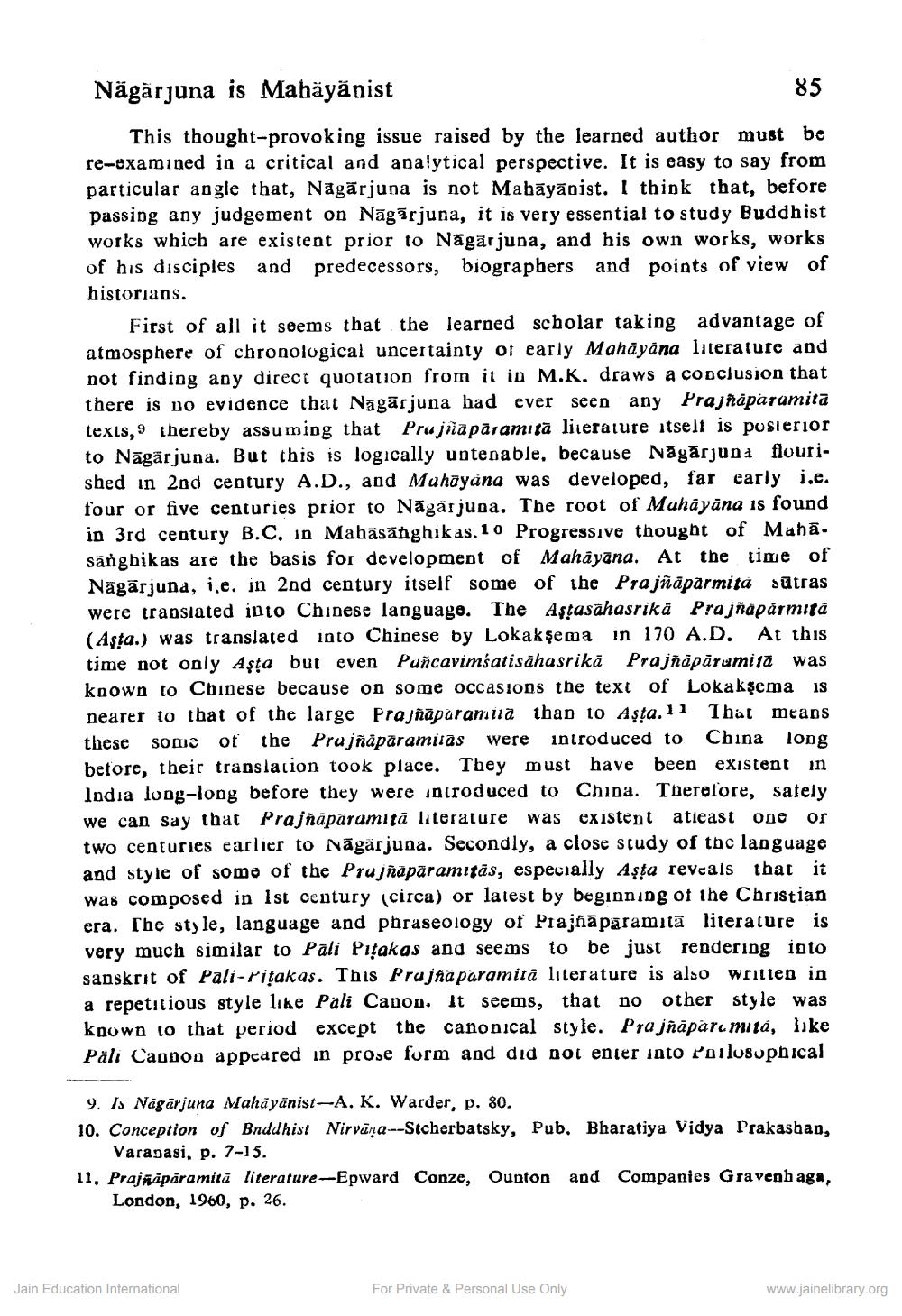________________
Nägārjuna is Mabäyänist
85
This thought-provoking issue raised by the learned author must be re-examined in a critical and analytical perspective. It is easy to say from particular angle that, Nagarjuna is not Mahāyāoist. I think that, before passing any judgement on Nāgārjuna, it is very essential to study Buddhist works which are existent prior to Nagarjuna, and his own works, works of his disciples and predecessors, biographers and points of view of historians.
First of all it seems that the learned scholar taking advantage of atmosphere of chronological uncertainty of early Mahāyāna literature and not finding any direct quotation from it in M.K. draws a conclusion that there is no evidence that Nāgārjuna had ever seen any Prajnaparamita texts, 9 thereby assuming that Pru ja pāramitā literature itselt is posterior to Nāgärjuna. But this is logically untenable, because Nagarjuni flouri shed in 2nd century A.D., and Mahayana was developed, far early i.e. four or five centuries prior to Nāgarjuna. The root of Mahayana is found in 3rd century B.C. in Mabāsānghikas. 10 Progressive thought of Mahā. sāngbikas are the basis for development of Mahayana. At the time of Nāgārjuna, i.e. in 2nd century itself some of the Pra jñāpārmità sūtras were translated into Chinese language. The Astasahasrikā Prajñapärmita (Asta.) was translated into Chinese by Lokakşema in 170 A.D. At this time not only Aşta but even Puncavimśatisähasrikā Prajñāpārumina was known to Chinese because on some occasions the text of Lokakşema is nearer to that of the large Prajñāparamua than to Așta. 11 That means these some of the Pru jñāpāramiras were introduced to China long before, their translation took place. They must have been existent in India long-long before they were introduced to China. Therefore, sately we can say that Prajñāpāramitā literature was existent atleast one or two centuries earlier to Nagarjuna. Secondly, a close study of the language and style of some of the Prujnaparamitās, especially Aşta reveals tbat it was composed in Ist century (circa) or latest by beginning of the Christian era. The style, language and phraseology of Prajñāparamitā literature is very much similar to Pali Pitakas and seems to be just rendering into sanskrit of Pali-Pitakas. This Prujnaparamitā literature is also written in a repetitious style like Pali Canon. It seems that no other style was known to that period except the canonical style. Pra jñāpar. mitá, like Päli Cannon appeared in prose form and did not enter into Poilusuphical
9. Is Nāgārjuna Mahāyānist-A. K. Warder, p. 80. 10. Conception of Bnddhist Nirvana--Stcherbatsky, Pub, Bharatiya Vidya Prakashan,
Varanasi, p. 7-15. 11. Prajñāpāramitā literature --Epward Conze, Ounton and Companies Gravenb aga,
London, 1960, p. 26.
Jain Education International
For Private & Personal Use Only
www.jainelibrary.org




